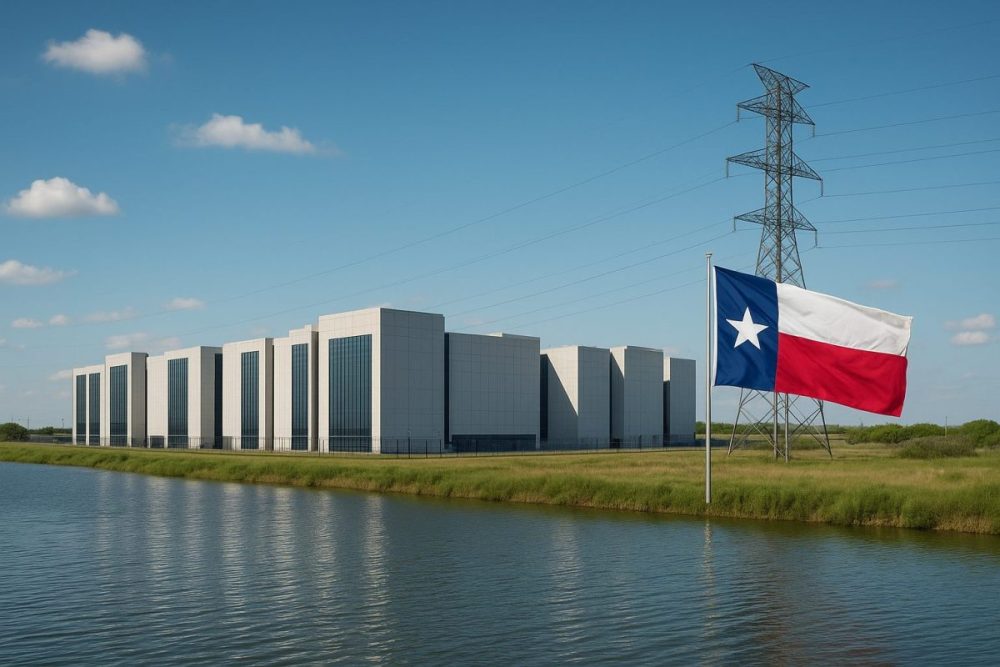Data Centers Transforming Texas’ Electricity Market
By Paige Feild | October 16, 2025 | With electricity prices climbing nationwide and state regulators warning of “lower system stability,” Texas is confronted with the high costs of serving data centers while protecting local communities and resources.
Electric Reliability Council of Texas (ERCOT) spokesperson Trudi Webster told Texas Scorecard that the Public Utility Commission of Texas has started rule-making “with the purpose of implementing the SB6 performance requirements for data centers’ and other large loads’ response during emergencies.”
Signed into law in 2023, Senate Bill 6, Webster explained, “creates performance requirements for new large loads during emergency conditions.”
Large loads are high electricity demand consumers, such as the newly operational Stargate data center campus in Abilene and bitcoin mining operations like the one in Rockdale, Texas.
While Texas’ regulators are imposing stricter performance standards, concerns remain over how the state can sustain these energy-hungry projects.
Stargate I campus in Abilene will have a 1.2 gigawatt (GW) power capacity, which equates to roughly 1,200 megawatts (MW), when fully completed in 2026. If the facility ran at maximum capacity when fully completed, the campus would consume 10,512,000 MWh (megawatt hours) per year. That’s enough energy to power over 1 million homes in 2025.
Data centers in Texas are forecasted by ERCOT to have a total demand of 77,965 MW in 2030. This is an increased projection from 2024, which projected a load of only 29,614 MW.
The World Economic Forum reported it is “impossible to accommodate the growth in AI data centres and maintain grid stability without prices increasing for all customers” in deregulated electricity markets like Texas.
Enverus, a publisher of energy-sector research, released a report revealing that ERCOT has “added 22.5 GW of new capacity since January 2024 … and is planning for nearly 100 GW of solar and battery additions by 2030.”
This is roughly 22,500 MW of capacity added since the beginning of last year, with planned additions of roughly 100,000 MW by 2030.
The Texas Energy Fund—overseen by the Public Utility Commission of Texas—provides grants and loans to finance the construction, maintenance, modernization, and operation of electric facilities in Texas.
According to the Enverus report, the Texas Energy Fund’s active due diligence process has seen four project withdrawals in March, two denials in April, four new projects advanced in April and May, and its first two loans awarded this summer.
While the electricity infrastructure projects appear to be slowing down and energy demands continue to increase, another issue exists in addition to rising utility bills.
Electricity consumption and water usage go hand-in-hand.
As previously reported, the Texas Water Development Board has explained that one of the reasons why Texas does not know how much water is actually being consumed by data centers in the state is because of “the variety of power sources that require varying amounts of water.” Additionally, there is “no state government authority that maintains a comprehensive list of data centers in the state.”
The indirect water consumption by data centers in 2023 has been estimated by researchers to be 4.52 liters per kilowatt hour (kWh) compared with the average American water intensity factor for electricity usage of 4.35 liters per kWh.
Amid uncertain water consumption further exacerbating infrastructure, drought, and aquifer concerns and high electricity demands, data center construction continues to proliferate throughout Texas.

This article originally appeared here.






